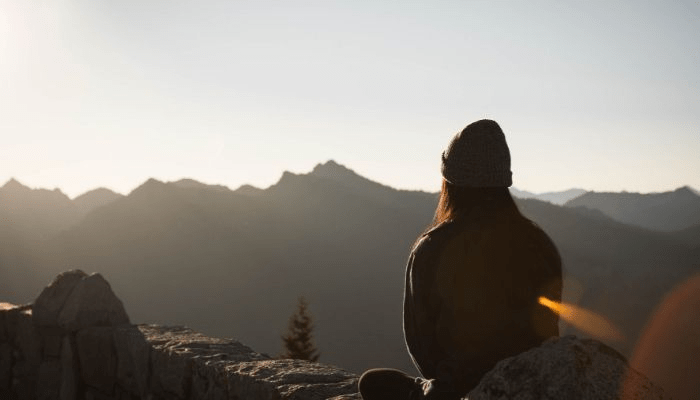
Pop quiz! How many different modes of communication do you have on your phone? There’s a good chance that the tally reaches at least five with calling, texting, video chat, email, and social media. Couple that with all the ways brands and businesses interact with you and the question becomes: When are you not communicating with someone or something?
The distractions that crowd our phones and inboxes make it difficult to focus on our priorities at work and at home, and they can contribute to stress and anxiety. A Pew Research survey of 1,801 adults found that, while there is not a direct correlation between social media use and stress, awareness of stressful or distressing events in the lives of others can have negative impacts on mental health in a phenomenon coined “the cost of caring.” Though awareness of what’s going on in the world can cause stress and anxiety, the good news is that we can ease those negative emotions through intentional awareness of ourselves, better known as mindfulness meditation.
With a groundswell of support for mindfulness and evidence to support its benefits, why don’t more of us make mindfulness a priority?
The Barriers We Build Against Mindfulness
It’s instinctual to define and judge ourselves. We often categorize thoughts in respect to our identities (“I’m a busy person”) and cast judgment on them (“I shouldn’t be selfish about someone taking up my time”). However, when we are mindful, we are aware of how we feel and how it impacts us. This is no small thing. In fact, it’s a a huge hurdle for most of us to jump.
There are also misconceptions about what meditation and mindfulness look like in our day-to-day lives. Are we all supposed to sit cross-legged, chant “ohm,” and become one with nature? The idea that mindfulness is some cultish practice is not true. Integrating mindfulness into our daily lives brings us focus on what’s actually going on around us. And meditation is an endeavor of small steps that anyone can start today.
Keep It Simple
Just as The ONE Thing describes the domino effect, mindfulness takes root more fully when we integrate it into our lives in small doses over time.
Choose a morning activity that locks you in for your day (drinking coffee, taking a shower, savoring a few minutes of quiet) and acknowledge the sensory experiences that go along with it. Close your eyes, breathe in through your nose, and release your face and neck muscles as you exhale. Spend about five minutes a day in this state with no expectations for what it will do for you, and use that centered feeling as the standard for what mindfulness should feel like in other situations.
Focus On the Body
If you feel yourself becoming distracted or overwhelmed during the day, take a moment to do something physical. Go for a quick walk, do some light stretching at your desk, or do some breathing exercises. Bringing our thoughts back to our physical selves is a good way to step away from internal (or digital) distractions and reset.
If you’re feeling unfocused, try to breathe and return to a state of awareness. Pay attention to the ways your breath changes, the ways your muscles relax, the flow of blood to your hands and feet and face. The physical act of relaxing your body can sometimes help you take stock of your thoughts and refocus them to prioritize your ONE Thing, setting aside the other thoughts that distract us from it.
Be Mindful of Others
Other people can be a source of support on your mindfulness journey, or they can be barriers. Either way, their behavior is out of your control. What you can control is how your body and mind are processing your interactions with others. When you’re in a conversation, especially one that’s stressful, check your posture and your tone. Focus your attention on the person speaking and how, to the best of your knowledge, you can interact in ways that benefit you both. Awareness of yourself and others in the moment can help you understand what you’re each seeking from the communication, and it can help you recognize when you need to set boundaries.
Mindfulness is not about changing who you are fundamentally. It’s about being in touch with the person you are and your place in the world. If you want to integrate mindfulness meditation into your life, download our 66-Day Challenge® calendar to track your progress as you form the habit, and surround yourself with like-minded people in The ONE Thing community.
